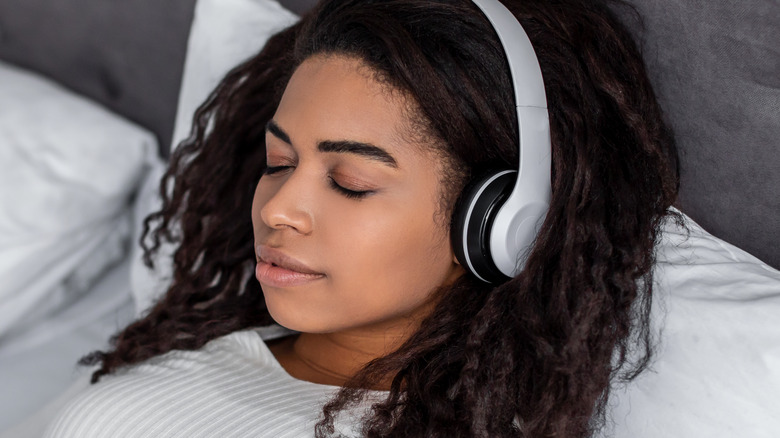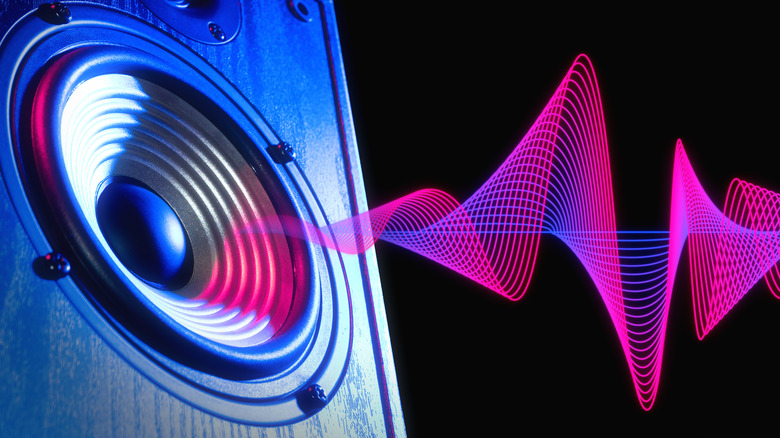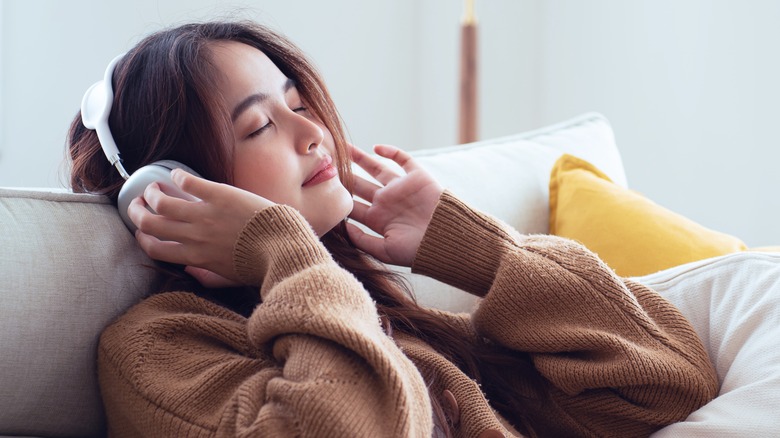Experts Say This Sound May Be Better Than White Noise For Sleeping
Do you often find yourself struggling to drift off or stay asleep at night? You're in good company. According to the Centers for Disease Control and Prevention (CDC), roughly 70 million people across the U.S. suffer from chronic sleep issues. And this is nothing to take lightly — in addition to making you tired and miserable, sleep problems can contribute to health concerns from obesity to depression.
As you might expect, this has led to a plethora of tips and tricks being shared to help people achieve better rest. Some extoll the virtues of cooling bed sheets, while others turn to supplements like melatonin or CBD for sleep. But for many people, it all comes down to what they're listening to as they try to sail away to Slumberland.
For years, white noise has been a go-to method for anyone struggling with sleep issues. And, more recently, it has also been suggested that brown noise may help you sleep better. But now, it seems that these OG sleep aids have another auditory challenger.
What is pink noise?
Turns out, white noise isn't the only colored noise waiting for us in the wide world of sound. Distinguishable by their different frequencies and patterns, colored noises include variations such as pink, brown, blue, gray, orange, and more (via eMastered). But when it comes to sounds for sleep, pink noise is the one currently making waves.
As the Sleep Foundation explains, pink noise includes sounds on every frequency audible to the human ear. While each of these frequencies harmonizes with the same intensity, higher frequencies are included at a quieter volume, which creates a pleasing emphasis on lower tones. This creates a satisfying experience for listeners and sounds less irritating and high-pitched than staticky white noise.
To put these sounds in context, naturally occurring instances of pink noise include the patter of rain, the rustle of leaves, ocean waves, and even heartbeats (via Casper). Compare these natural soundscapes with typical causes of white noise, such as the electric hum of ceiling fans, TV and radio snow, or the not-so-relaxing sound of vacuum cleaners.
Thanks to its agreeable composition of frequencies, pink noise is starting to gain attention among restless sleepers. On TikTok, the hashtag #pinknoise has over 8.8 million views, and the official pink noise playlist put together by Spotify has over 160,000 likes. But how can you tell if it's the right sleep sound for you?
Is pink noise your best match for restful sleep?
Because each type of noise interacts with our ears in a slightly different way, individuals may have a favorite that helps them doze the most peacefully. The sleep experts at MattressNextDay suggest that pink noise is ideal for light sleepers who are easily disturbed, or for people that consistently wake up feeling sluggish and tired. "Pink noise uses deeper sounds compared to white noise, so it can appear to be more soothing and gentler on the ear," says CEO Martin Seeley. "Studies have also found that pink noise helps you spend more time in deep sleep, which means that you wake up with more energy."
If that's not enough, several studies — including one published in Frontiers in Human Neuroscience in 2017 — suggest that listening to pink noise as you sleep may help improve your memory function the next day.
However, other types of colored noise may still have their place. MattressNextDay adds that brown noise is good for those who live in loud, busy neighborhoods or who lay awake with persistent thoughts. And while classic white noise could be too high-pitched and annoying for some, it may help with insomnia or ADHD-driven sleep issues. So it may be worth your while to test out different types of colored noise to see which one helps you achieve the quality of sleep you're searching for.


